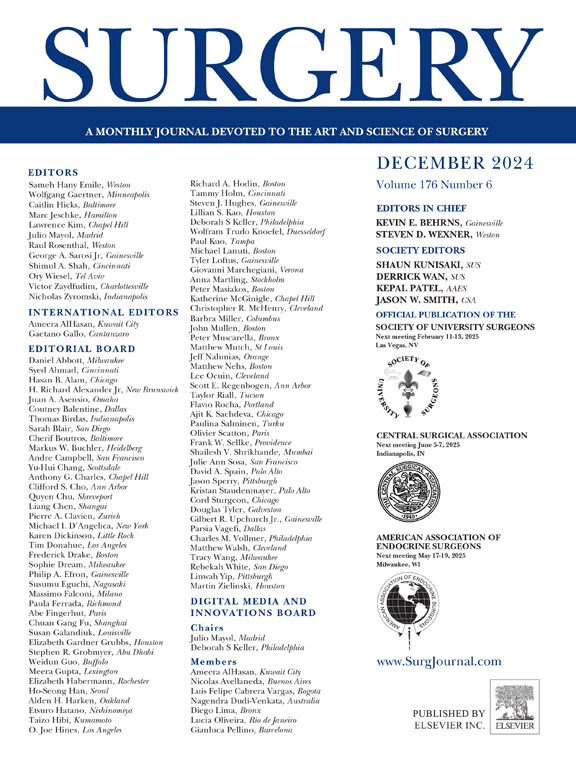Prognostic significance of the cachexia index for patients with perihilar cholangiocarcinoma
IF 3.2
2区 医学
Q1 SURGERY
引用次数: 0
Abstract
Background
The prognostic value of the preoperative cachexia index for patients with perihilar cholangiocarcinoma remains unclear.
Methods
We retrospectively evaluated 236 patients who underwent radical resection for perihilar cholangiocarcinoma from September 2002 to December 2020. The cachexia index was calculated as follows: (skeletal muscle index × albumin level)/neutrophil-to-lymphocyte ratio, with sex-specific cutoff values determined via receiver operating characteristic curves on the basis of 3-year survival data. Clinicopathologic characteristics and survival outcomes were compared between the low-cachexia index (n = 95) and high-cachexia index (n = 141) groups. Multivariable analyses were performed to identify prognostic factors for overall survival and relapse-free survival.
Results
The low-cachexia index group was characterized by greater carbohydrate antigen 19–9 level (56 vs 31 U/mL, P = .024) and greater proportion of preoperative biliary drainage (84% vs 70%, P = .013). The low-cachexia index group underwent vascular resection and reconstruction more frequently (47% vs 29%, P = .006) and had a greater rate of lymph node metastasis (54% vs 35%, P = .005). The median overall survival and relapse-free survival times of the low-cachexia index group were significantly worse than those of the high-cachexia index group (overall survival, 29.0 vs 47.4 months, P < .001; relapse-free survival, 17.2 vs 33.1 months, P < .001). Multivariable analysis revealed that a preoperative cachexia index (hazard ratio for overall survival, 0.95, P = .008; hazard ratio for relapse-free survival, 0.95, P = .017) and high preoperative carbohydrate antigen 19-9 level (hazard ratio for overall survival, 1.01, P = .002; hazard ratio for relapse-free survival, 1.01, P = .012) were prognostic factors.
Conclusion
The cachexia index may be a useful biomarker for the prediction of tumor aggressiveness and prognosis before perihilar cholangiocarcinoma resection.

求助全文
约1分钟内获得全文
求助全文
来源期刊

Surgery
医学-外科
CiteScore
5.40
自引率
5.30%
发文量
687
审稿时长
64 days
期刊介绍:
For 66 years, Surgery has published practical, authoritative information about procedures, clinical advances, and major trends shaping general surgery. Each issue features original scientific contributions and clinical reports. Peer-reviewed articles cover topics in oncology, trauma, gastrointestinal, vascular, and transplantation surgery. The journal also publishes papers from the meetings of its sponsoring societies, the Society of University Surgeons, the Central Surgical Association, and the American Association of Endocrine Surgeons.
 求助内容:
求助内容: 应助结果提醒方式:
应助结果提醒方式:


